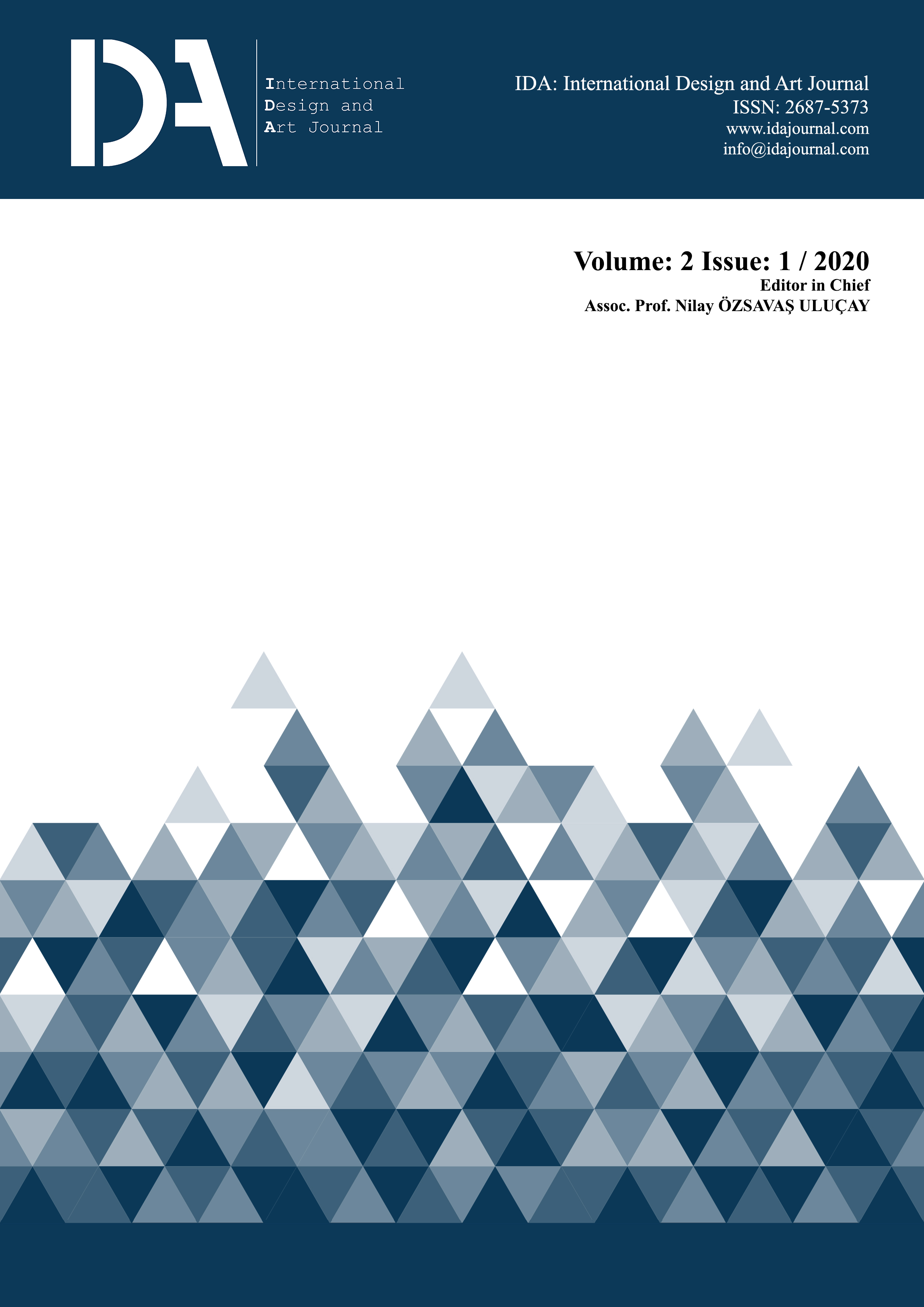Yeniden Kullanılamayan Anıtsal Bir Yapı: Karaman Hatuniye Medresesi
Anahtar Kelimeler:
Tarihi Bina- Yeniden Kullanım- Restorasyon- Hatuniye Medresesi- KaramanÖzet
Sahip olunan kültür mirasını gelecek nesillere aktarmaya yönelik çabaların en önemlilerinden biri de uygun bir fonksiyon ile yapıyı kullanmaktır. Tarihi yapının sahip olduğu değerlerin farkına varılarak kullanılması, kültürel mirasın yaşam sürecini uzatan bir yaklaşımdır. Bu yaklaşımın tersi olarak kültür mirasının sahip olduğu değerleri koruyamayan yeniden kullanım önerileri ise tarihi yapıların özgün kimliklerine zarar vermekte, bazı durumlarda ise geri dönülmez hasarlara sebep olmaktadır. Karaman il merkezinde yer alan, Karamanoğulları Beyliği dönemine ait Hatuniye Medresesi (Melek Hatun, Nefise Hatun) uzun yıllar yeniden kullanım çalışmalarına konu olmuştur. Yapı için önerilen fonksiyonlar kısa süreli işlevsel olmuşsa da kalıcı bir fonksiyon seçilememiş ve farklı nedenlerden dolayı yapı verimli bir şekilde kullanılamamıştır. Her fonksiyon sonrasında yapı kullanılmadan bekletilmiş ve değişik şekillerde zarar görmüştür. Bu makale kapsamında, medrese yapısının tarihi önemine ve geçirdiği müdahalelere yönelik toplu bilgi verilerek, yeniden kullanım olanaklarına yönelik değerlendirmeler yapılmıştır. Araştırma konusu yapının yeniden kullanımına yönelik morfolojik, teknik, fonksiyon ve stratejik değerlendirmelerden oluşmaktadır. Yapının yeniden işlevlendirilmesine yönelik analitik sonuçlar elde edebilmek için SWOT analizi yapılmış, yapının yeniden kullanımında güçlü yönler ile tehditlerin ağırlıklı olduğu sonucuna ulaşılmıştır. Hatuniye Medresesi özelinde anıt eserlerin yeniden kullanım olanaklarına yönelik bir yaklaşım paylaşılmıştır.
Referanslar
Ahunbay, Z. (2019). Giving New Life to Historic Buildings. Paper presented at the International Civil Engineering and Architecture Conference, Trabzon, Türkiye.
Akın, E. S. (2018). Conservations and Rehabilitation in Historical Urban Centres: Halit and Gaziosmanpasa 22nd Streets, Tokat, Turkey. Iconarp International Journal of Architecture and Planning, 6(2), s.274-303.
Bassett, P. G. (1997). The Theory and Practice of Adaptive Reuse. Symposium on Software Reusability.
Bektaş, C. (1992). Koruma Onarım. Yapı-Endüstri Merkezi, İstanbul: YEM Yayınevi.
Brooker, G. ve Stone, S. (2010). What is Interior Design? Mies: Rotovision.
Cantacuzino, S. (1975). New Uses for Old Buildings (Vol. 3). Londra: Architectural Press.
Cramer, J. ve Breitling, S. (2012). Architecture in Existing Fabric: Planning, Design, Building. Londra: Birkhauser.
Diez, E., Aslanapa, O., ve Koman, M. M. (1950). Karaman Devri Sanatı. İstanbul Üniversitesi Edebiyat Fakültesi Yayınları.
Dülgerler, O. N. (1995). Karamanoğulları Dönemi Mimarisi. İstanbul: Türk Tarih Kurumu Yayınları.
Gelfand, L., ve Duncan, C. (2011). Sustainable Renovation: Strategies for Commercial Building Systems and Envelope (Vol. 19). Hoboken, New Jersey: John Wiley & Sons.
Hasol, D. (2014). Ansiklopedik Mimarlık Sözlüğü (13. Baskı). İstanbul: YEM Yayınevi.
Hein, M. F., ve Houck, K. D. (2008). Construction Challenges of Adaptive Reuse of Historical Buildings in Europe. International Journal of Construction Education Research, 4(2), s.115-131.
Highfield, D. (1987). Rehabilitation and Re-Use of Old Buildings: London and New York: Spon Press, Taylor&Francis.
İslamoğlu, Ö. (2018). Tarihi Yapıların Yeniden Kullanılmasında Yapı-İşlev Uyumu: Rize Müzesi Örneği/The Structure-Function Coherence in the Reuse of Historical Buildings: Rize Museum Sample. Journal of History Culture and Art Research, 7(5), s.510-523.
Konyalı, İ. H., (1967). Âbideleri ve Kitabeleri ile Karaman Tarihi. İstanbul: Yeni Kitap Basımevi.
Kuban, D. (2000). Tarihi Çevre Korumanın Mimarlık Boyutu: Kuram ve Uygulama. İstanbul: Yapı-Endüstri Merkezi Yayınları.
Özüdoğru, Ş. (2005). Karaman’da Türk Mimari Eserleri Süslemesi. Karaman Tarihi ve Kültürü, C. V, Karaman: Karaman Valiliği İl Kültür ve Turizm Müdürlüğü Yayınları, s.129-309.
Pearson, C. (1999). Architecture reborn: Converting Old Buildings for New Uses. New York, USA: Mcgraw Hill Inc.
Plevoets, B., ve Van Cleempoel, K. (2013). Adaptive Reuse as an Emerging Discipline: an Historic Survey. Reinventing Architecture Interiors: A Socio-Political View on Building Adaptation. London: libri Publishers. s.13-32.
Sözen, M. (1970). Anadolu Medreseleri: Selçuklu ve Beylikler Devri (Vol. 1). İstanbul: İstanbul Teknik Üniversitesi, Mimarlık Tarihi ve Rölöve Kürsüsü. s.49-57.
Steinberg, F. J. H. I. (1996). Conservation and Rehabilitation of Urban Heritage in Developing Countries. Habitat Intl. 20(3), s.463-475.
Eryavuz, Ş. (1997). Hatuniye Medresesi. TDV İslâm Ansiklopedisi. https://islamansiklopedisi.org.tr/hatuniye-medresesi--karaman (10.05.2020).
Şikârî, A. (1946). Şikârinin Karaman Oğulları Tarihi (Vol. 2). Konya: Yeni Kitab Basımevi.
Yetkin, Ş. (1972). Anadolu’da Türk Çini Sanatının Gelişmesi. İstanbul: İstanbul Üniversitesi Edebiyat Fakültesi Yayınları.
İndir
Yayınlanmış
Sayı
Bölüm
Lisans
IDA: International Design and Art Journal açık erişimli akademik bir dergidir. Kabul edilen makalelerin tüm yayın hakları IDA: International Design and Art Journal'a devredilmiş sayılır. Makaleler başka bir yerde yayınlanamaz, kopyalanamaz ve referans göstermeden kullanılamaz.

IDA: International Design and Art Journal Creative Commons Atıf-GayriTicari-AynıLisanslaPaylaş 4.0 Uluslararası Lisansı ile lisanslanmıştır.


